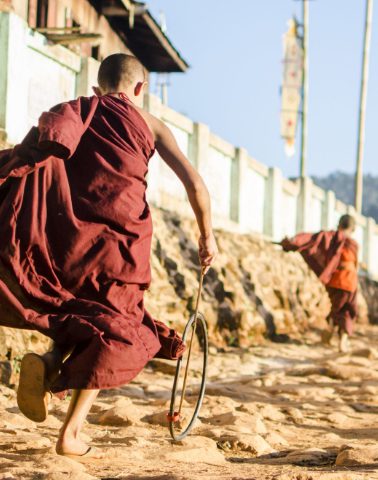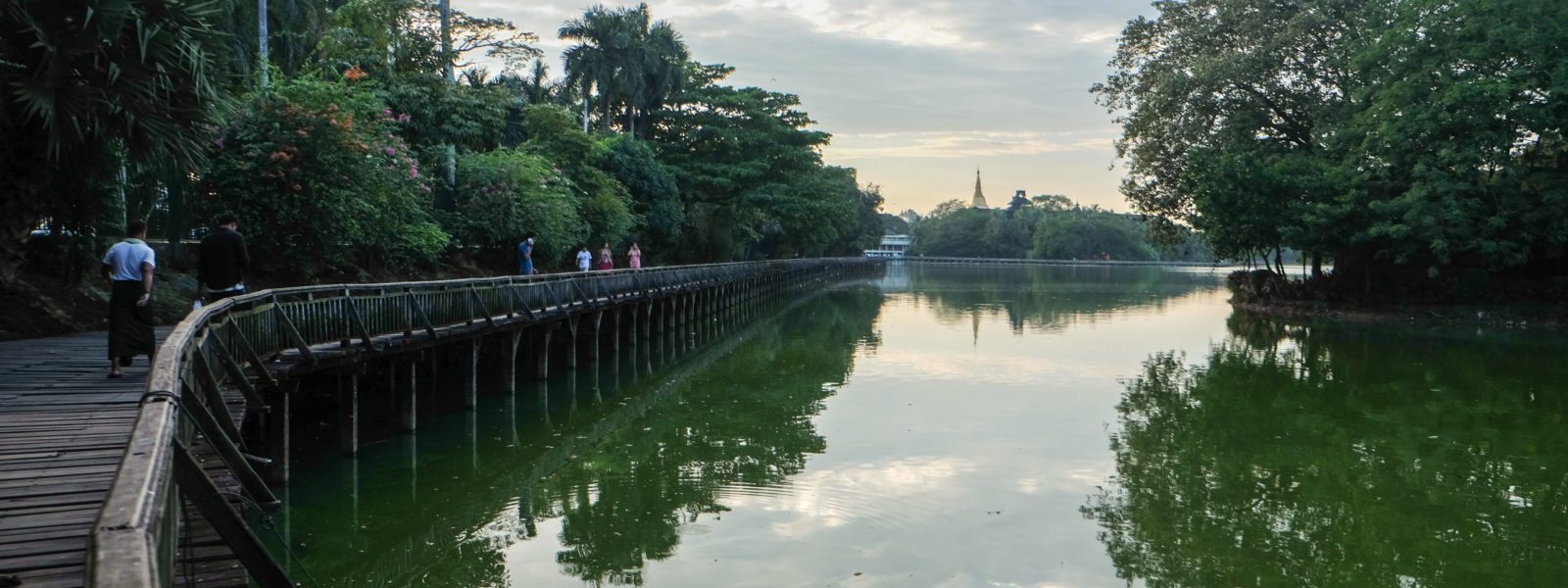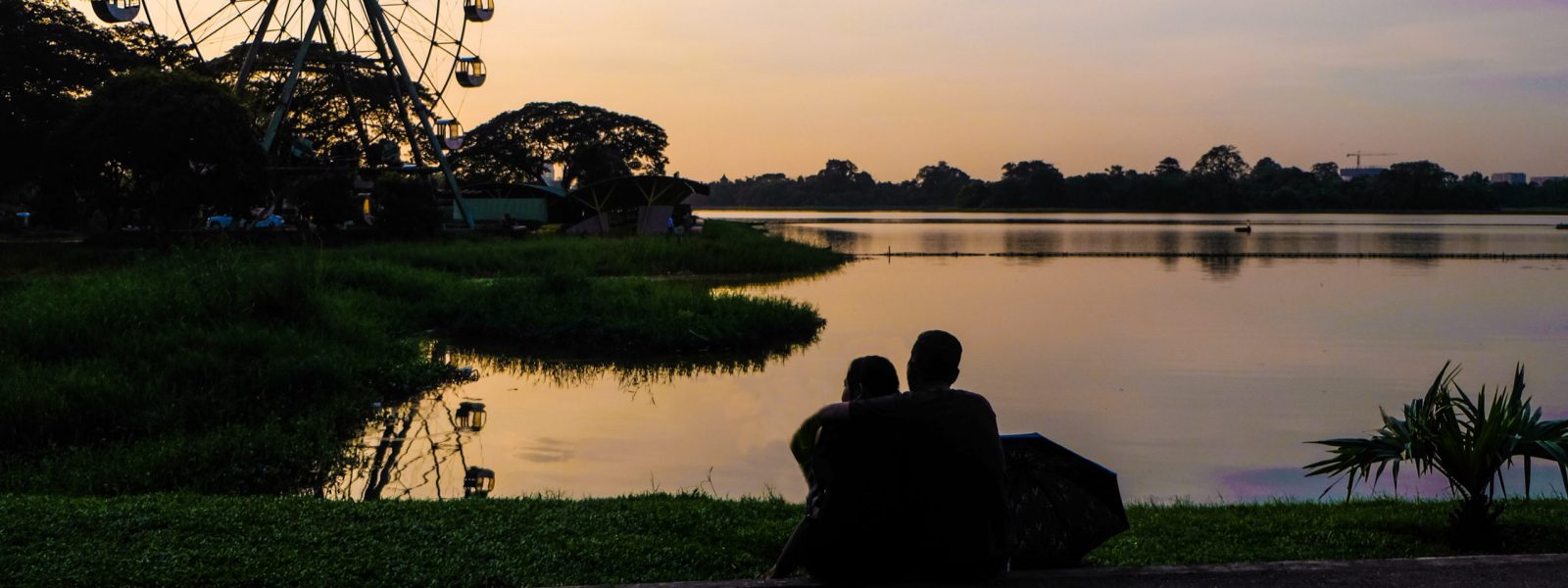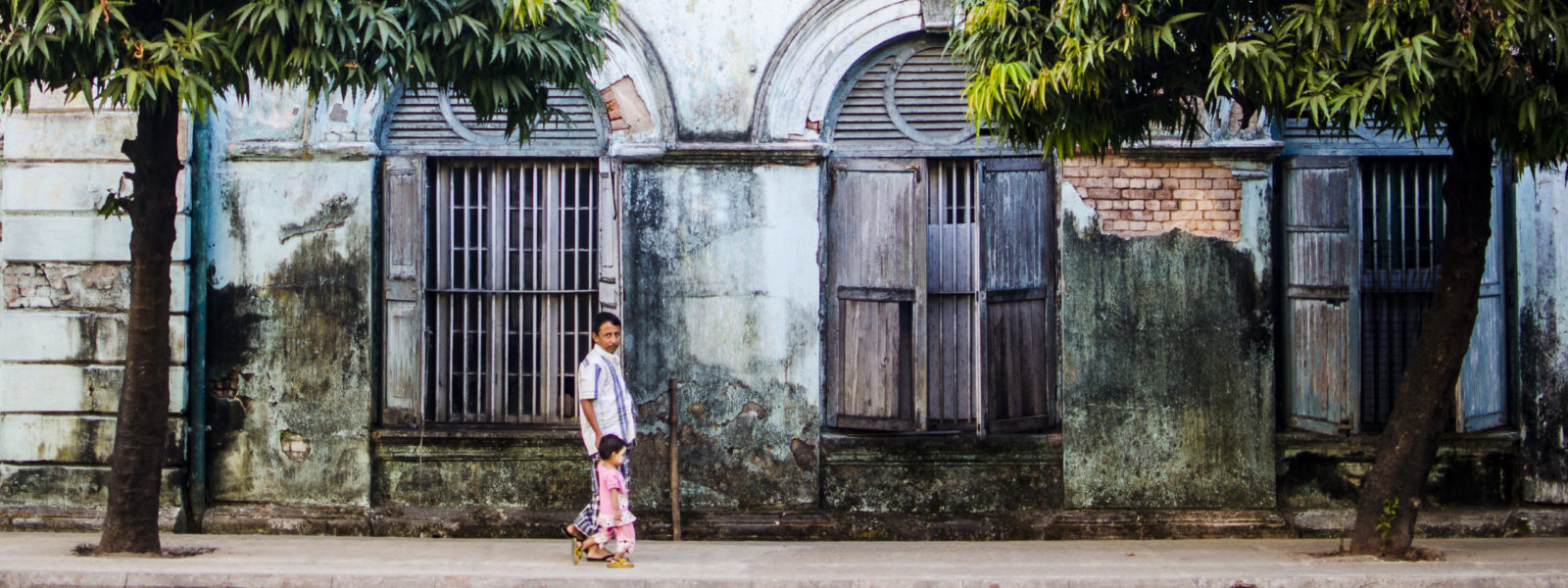
Subscribe to our mailing list
We are still here! Let us send you tips for travelling through Myanmar and stories from the road …
It is also full of contradictions. The residents wear big smiles. The street corners are garlanded with barbed wire. The stupas twinkle; the streets have seen horror. The pagodas are bedecked in gold-leaf; many people struggle to eke out a living.
Myanmar was once trapped in time. Development stagnated as successive military juntas marched along the “Burmese way to socialism.” In this backwater, Yangon was the most vibrant pool. In this city was Myanmar’s rich ethnic diversity, from Chin to Chinese, Tamils to Tai. Today, as history repeats itself, the city and its people strain to free themselves from their old tawdry clothes, and step with more confidence into a brighter future.

One of the best things to do in Yangon is visit the 2,500 year old ‘winking wonder’, Shwedagon Pagoda. Both religious pilgrimage site and social haunt for Yangonites, a good chunk of a travellers first day can be spent wandering about this masterpiece of Buddhist architecture.
Besides Shwedagon, Yangon also boasts the resplendent Sule Pagoda in the heart of downtown and Botataung Pagoda on the banks of the Yangon River. Visitors to Yangon can admire the colonial heritage of Yangon along the Strand Road and Pansodan Street, as well as when wandering down “Cinema Row” on Bogyoke Road.
Visitors to Yangon can enjoy the sizzling samosas and refreshing lassis on the streets of the Indian Quarter while the hooting boozers of Chinatown will attract those looking to wet the whistle at sundown. Travellers seeking a spicier night may opt for the hip bars of Sanchaung where the young, cool things of the city host poetry slams and Ska sets.
History-wonks visiting Yangon should make their way to the National Museum, the House of Aung San, and the bizarre Drug Elimination Museum where the displays are questionable at best, pure propaganda at worst. Burmese boxing at Thein Phyu Stadium and the derelict racecourse offer an insight into Rangoon-past, while the chic restaurants and art galleries of Bo Aung Kyaw and Bogalay Zay Street share a glimpse of what this city is becoming.
As a day-trip from Yangon it is possible to visit the old capital city of Bago – home to Myanmar’s tallest pagoda – and see the European architecture at Thanlyin – once the fiefdom of a Portugeuse privateer. The magnificent Secretariat Building and “open-air libraries” of 37th Street are also Yangon must-sees.
The Circular Train that loops around the city is a pleasant way to see the leafy environs of the urban sprawl. Intrepid travellers to Yangon can disembark at Insein and peep into the train-building yard and the tumultuous market stop of Mingalar Bazaar.
All this and more can be arranged by Sampan Travel. Get in touch with one of our travel consultants and we will help you unlock this remarkable city.

Yangon has a thrilling history.
It began as “Dagon”, a humble fishing village, lying on the dagger shaped peninsula at the confluence of the Yangon and Bago rivers and the Pazundaung creek. Distinguishing it from other fishing villages was the Shwedagon Pagoda which brought a steady stream of pilgrims each year.
Following his conquest of Central Burma in 1755, King Alaungpaya, founder of the third and final Burmese dynasty, rechristened the village ‘Yangon’, translatable as ‘end of strife’. Under Alaungpaya, Yangon sprawled exponentially and by the time the British took control after the Second Anglo-Burmese War in 1852 it was described by one imperialist as ‘full of dust’ and ‘overcrowded bamboo shacks.’
Referred to by the British as ‘Rangoon’, plans were quickly put in place to modernise the city, and a huge amount of roads and administrative buildings were built predominantly downtown towards the Yangon (or ‘Hlaing’) River, with Sule Pagoda as the focal point of the checkered street plan.
Rangoon grew to become a central stopover for steamships trawling the region and was soon regarded as one of the most beautiful and cleanest cities in the British Empire, nicknamed the ‘Princess of the East.’ By the 1920s its charms were drawing the bright artistic stars from the west such as Rudyard Kipling, Aldous Huxley, and W. Somerset Maugham.

Japanese bombing of the city in 1941 took both the British and the Burmese by surprise at the start of the Burma Campaign of the Second World War. The British retreated to India and the Japanese had control of the city by Spring 1942. The New Law Courts became HQ for the Japanese Imperial police and the Strand Hotel was used to stable the army’s cavalry. Yangon remained Burma’s capital when the country gained independence in 1948, and remained so until the military government relocated the seat of power to the new city of Nay Pyi Daw in 2006.
Today Yangon is a city much marked by its time as a colonial capital, most noticeably through the vast teak wood mansions hidden amongst shady side streets and broad leafy boulevards flanked by towering buildings in Neoclassical and Indo-Saracenic styles.
However, the charms of this city today is as much due to the creative and welcoming locals, with their jovial beer stations and the curious little shrines for the animistic spirit beings found in corners of foliage throughout the city. Though the British street plan remains, this is very much a Burmese city. As Norman Lewis wrote in his book Golden Earth: ‘through these European arteries now courses pure oriental blood.’
Like a small Bangkok free of neon lights and flocks of backpackers, like a more raucous and vibrant Vientiane, Yangon, Myanmar’s thriving treasure, is once again becoming the most alluring city in Southeast Asia.
Teasing out the stories and secrets of Yangon’s turbulent history.
Light and humorous, set in a renovated colonial building in downtown Yangon.
City of dreams and gold, Yangon is erupting with the energy to spurn its shackles.
Escape the hullabaloo, lollop through verdant paddy and past waving whippersnappers.